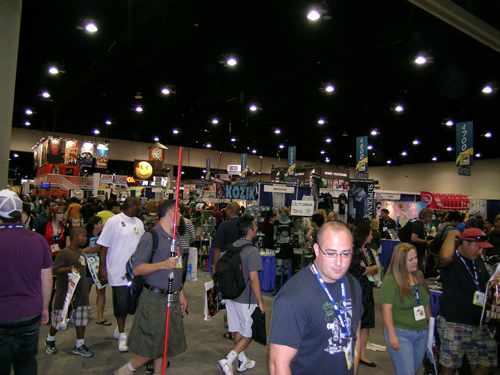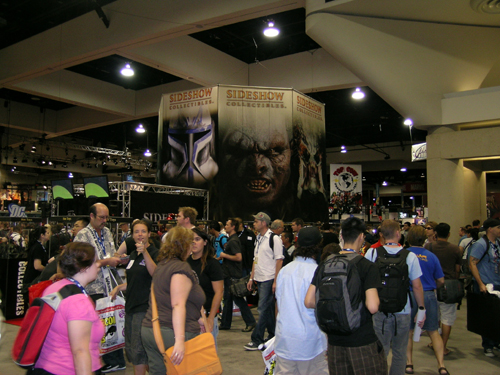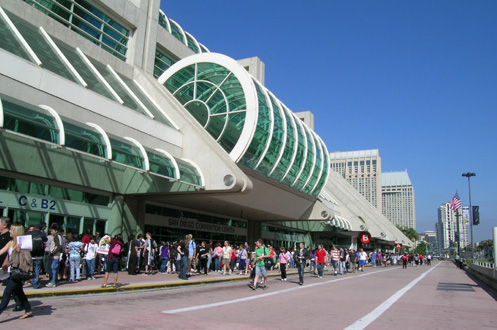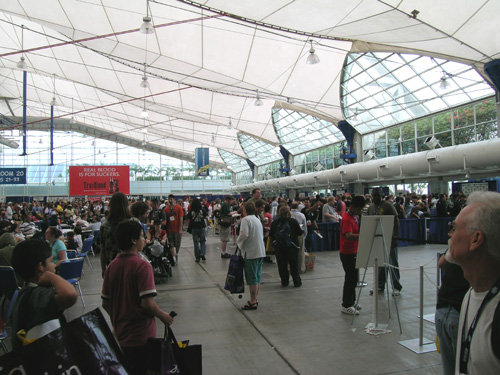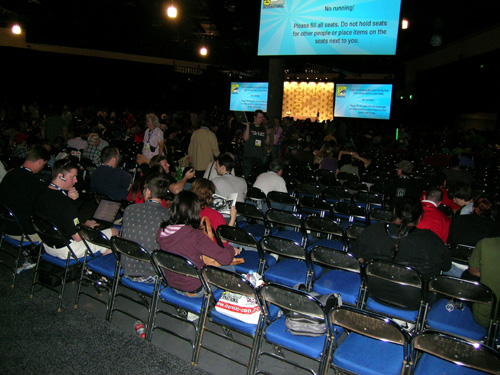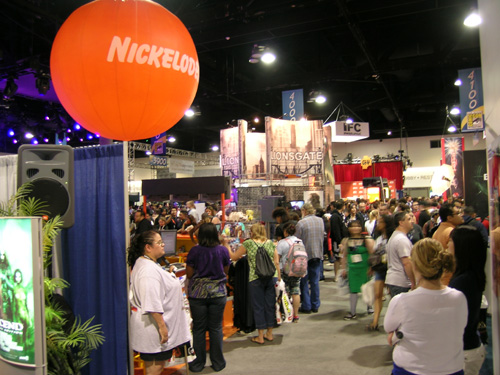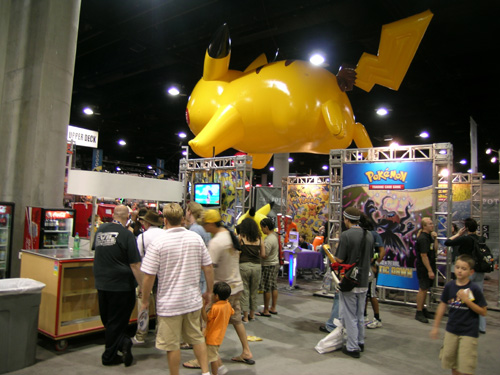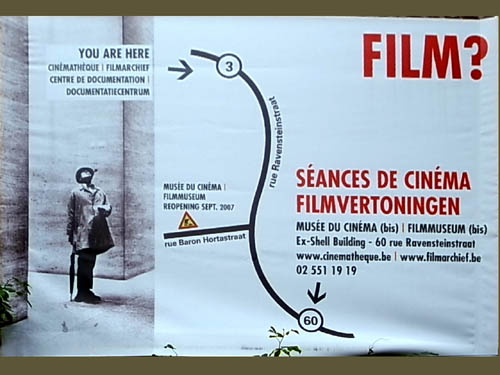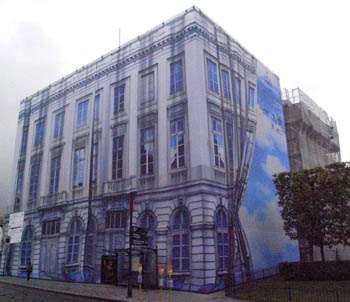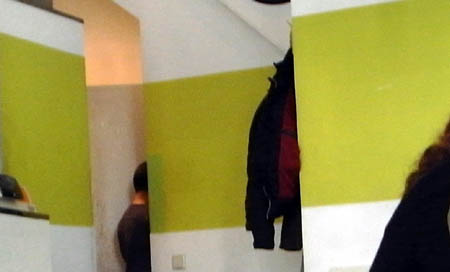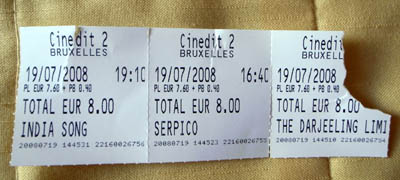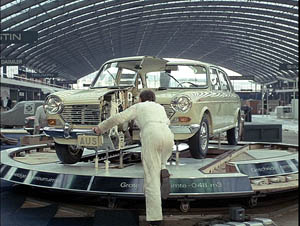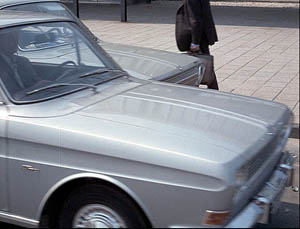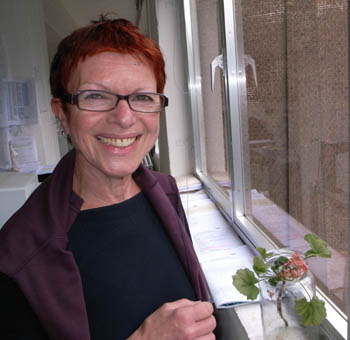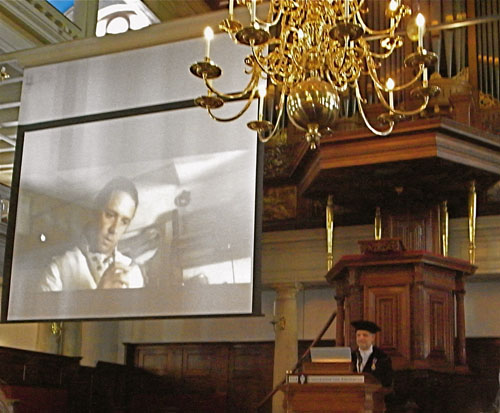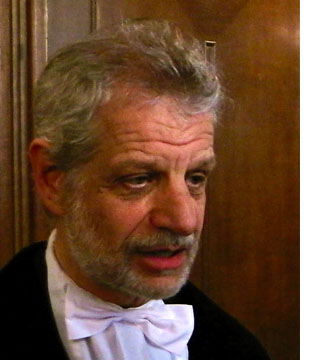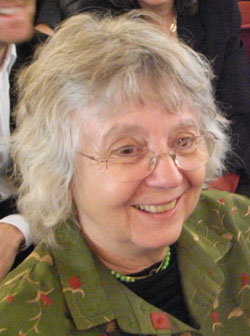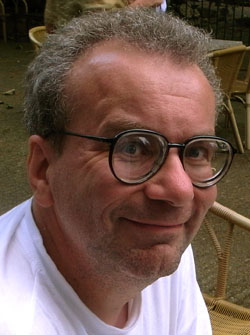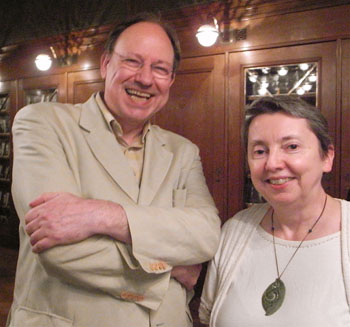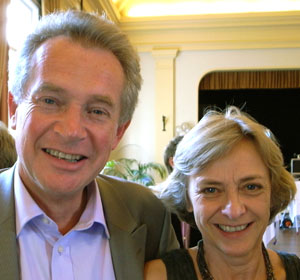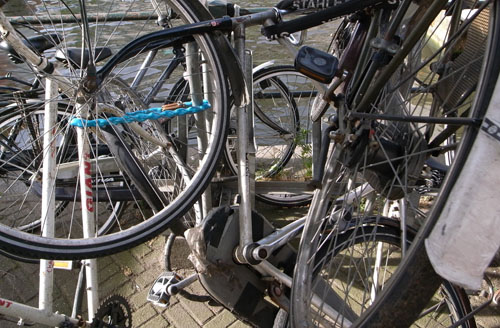Archive for the 'Film and other media' Category
Comic-Con 2008, Part 2: Why Hollywood cares
Kristin here-
You can’t picture the typical reader of Variety or the New York Times picking up the latest issue of Superman at the local comics shop. So why is Comic-Con, the annual confab of fans from around the world, gathering so much interest from both mainstream media and the trade press?
The obvious answer is that a growing number of megapictures and TV series are derived from superhero comics and, more broadly, fantasy and science-fiction literature. The chance to see stars and directors on panels, the first look at preview clips–these draw both fans and entertainment reporters.
Recently, the press is suggesting that Hollywood’s presence is becoming dominant at this gathering of self-professed geeks. After going to my first Comic-Con last month, I’m thinking that something else is going on. First, it’s not clear that Hollywood rules the Con. Second, and more interesting, is the question of exactly how Hollywood benefits from being there–or indeed, whether it benefits at all.
Hollywood vs. comics
Michael Cieply’s July 25 article in the New York Times is entitled, “Comic-Con Brings Out the Stars, and Plugs for Movies.” To read it, you would think that Comic-Con is a purely film event. Cieply Refers to Hugh Jackman promoting X-Men Origins: Wolverine, Mark Wahlberg presenting clips from Max Payne, the cast and director of Twilight addressing a squealing crowd of young female fans, and so on. Nary a mention of comics, video games, action figures, collectibles, original artworks, and other items being sold or promoted in the vast exhibition hall, let alone the numerous simultaneous panels going on all day upstairs and the long, sinuous lines of fans awaiting their turn for autographs from artists.
Writing for the Los Angeles Times, Geoff Boucher started his July 28 story, “This is the year they tried to take the comic out of Comic-Con.” The piece is entitled “Comic books overshadowed by the embrace of Hollywood.” A reporter could probably find plenty of people at Comic-Con to deplore the decline of comics’ representation at the event and an equal number to say that the non-Hollywood part of Comic-Con is alive and well.
Boucher quotes two of the former, who tend to be people who have been attending Comic-Con and other such events for decades. Michael Uslan, a comic-book author in the 1970s and now the executive producer of, among others, The Dark Knight, declares, “I think Comic-Con is in danger of having Hollywood co-opt its soul. It’s turning into something new, and you could really see it this year.” Robert Beerbohm, who has sold comics at every Comic-Con since it was first held in 1970, also worries about the trend: “All the Hollywood directors say that they loved comics as a kid, but now they [i.e., the comics] are being pushed off the floor. Where are the next generation of directors going to come from?”
I tend to think that young directors get influenced by such a diverse mix of popular and high cultural works that the putative lack of comics at Comic-Con won’t make much difference. Plus these days the “comics” are often graphic novels, readily available to any future director from big bookstore chains and internet sources.
Avoiding Hall H
Comic-Con has grown hugely over its nearly four decades of existence, and other media have crept in slowly. Hollywood has been prominently represented for years now. Peter Jackson promoted The Lord of the Rings there, and Adrien Brody and Naomi Watts showed up to promote his King Kong. But somehow this year the journalistic zeitgeist seems to have dictated that most writers choose to stress that Hollywood is in danger of taking over the con. Well, it makes for a dramatic story premise.
Admittedly, I’m a Comic-Con newbie. I’m sure to the old hands the creeping presence of films and TV is noticeable and perhaps worrisome. To me the big Hollywood previews were something you had to seek out, and they weren’t that easy to get to. As I mentioned in my first blog on the subject, the ground floor of the enormous, lengthy building is divided into halls A to H. A to G formed one vast open space, and an attendee could trek from one end to the other without going through doors or lobbies. Hall H, where most of the biggest Hollywood previews and panels took place, was entered from a separate door on the outside of the building. The lines to get in snaked in the opposite direction from doors A to G. Entering and exiting the exhibition hall’s lobby through one of those doors, you might not even notice the lines.
The other big “Hollywood” space is Ballroom 20, on the second floor. Anyone going from one part of the building to the other on this level, on the way to the panel rooms or the autograph area, would be likely to pass it.
My sole Hall H experience came when I attended the Terminator Salvation and Pixar previews on Saturday afternoon. The rest of my time at Comic-Con bore no resemblance to what the news stories describe. Apart from Hall H, I moved extensively around the exhibition hall, the various hallways between the panel rooms, through the “sails pavilion” and along the main lobby without having any sense of the big film and television events going on. I occasionally passed Ballroom 20 when there was a long line outside, but even then there was seldom any indication of what the people were waiting for—no banners or posters. (In general, Comic-Con has sold only very limited “signage” outside the exhibition hall. The upstairs hallways outside the panel doors were unadorned apart from small schedule boards.) In the exhibition hall I saw the studio logos hanging above their exhibit spaces and learned to skirt around them to avoid the particularly dense crowds in that area—but it was one area among many in that giant space. I seem to have experienced a different Con from the one widely reported on.
I’m not alone in thinking that Comic-Con is a giant, diverse event that simply has a big Hollywood screening room next door for those who are interested. Marc Graser, who wrote several pieces on this year’s Con for Variety, talked with its PR director, David Glanzer:
“Not every studio has a presentation every year,” Glanzer says. “It’s not an earth-shattering event. Sometimes people read too much into it.”
Yet the irony in all of this is that film- and TV-specific programming makes up less than 25% of the Con’s schedule, Glanzer says. And even on the event’s show floor, studios are overshadowed by comicbook publishers, retailers, videogames and toy companies.
The rest of the panels are educational sessions on how to break into the comicbook biz, for example, that allow Comic-Con to consider itself an educational nonprofit.
In other sources, Glanzer gives the more specific figure for film- and TV-related programming as 22%.
Those educational sessions for budding comic-book creators do make up quite a share of the program. These aren’t just how-to-draw lessons. There was a panel, “Comic Book Law School Afternoon Special: Gone But Not Forgotten!” dealing with intellectual property rights and others on the practicalities of the business. There were also 50-minute “Spotlight” sessions devoted to individual artists like Ralph Bakshi and Lynda Barry. The Eisner Awards ceremony celebrated accomplishment in the comics world.
Camping in Hall H
Why do journalists covering Comic-Con tend to stress Hollywood so much? I assume because the previews and panels are where the big stars are. They and their forthcoming films are the big news, the buzz that makes it worthwhile for magazines, newspapers, and blogs to spend the money to send their reporters or hire free-lancers. Most reporters experience that other “Hall H” con that I only visited once. I saw Anne Thompson at the “Masters of the Web” panel on Thursday morning, and she duly blogged about it. Still, most of the many Comic-Con stories posted on her Variety blog by her and other reporters were on the films and TV shows.
And why not? The big entertainment reporters get access to the major talent for short interviews, and their photographers can get up close for glamorous shots to use as illustrations. That’s no doubt what the largest portion of their readership or viewership is interested in. Attending the Con is an efficient way of generating a lot of copy.
Nevertheless, it doesn’t hurt to note that Hall H seats 6500 people, dozens, perhaps hundreds of them the entertainment reporters and bloggers. That’s out of 125,000 attendees who bought passes and probably tens of thousands more who were exhibitors, “booth babes,” or panel presenters. Granted, people circulated in and out of Hall H, though my impression is that some people stayed there much of the time. If sheer numbers of fans were to determine news coverage, the other facets of Comic-Con would get more attention than they do. But it’s the stars.
What’s in it for the studios?
The answer to that question might seem self-evident: publicity, and lots of it. The situation fuels itself. As more reporters from bigger outlets come to Comic-Con, the studios get more valuable publicity at a relatively small cost. (USA Today’s July 28 wrap-up occupied nearly a page and a half of the print edition.) And as more studios send previews and big stars, more news sources will find it worth sending their main reporters. In fact, perhaps this year the situation reached saturation. Hollywood studios filled all the possible slots in the two large halls, and in some cases big news outlets sent teams of reporters. That might be what gave both studio execs and reporters the impression that Hollywood is steamrolling the rest of the Con.
Publicity is all very well, but in the August 1 issue of The Hollywood Reporter, Steven Zeitchik questions whether it’s really worth all the fuss to preach to the converted. He notes the growth of the big studios’ efforts to impress fans: “On its face, this shouldn’t be the case. A brand’s cult following isn’t a very large number, and it’s also a group already inclined to like and spend money on a product, which by most marketing logic is exactly the group you should spend the fewest resources on.”
Sure, the Comic-Con previews may impress fans who are assumed to be tastemakers, particularly in the blogosphere. Zeitchik comments, “And if the tastemaker effect doesn’t happen, the strategy loses its teeth. One director who’s had repeated visits to Comic-Con noted just before he went to this year’s convention that ‘The total number of people in the blog world is probably only a few hundred thousand, and as much as they might hate to hear it, for most movies that’s not going to make the difference between a success and a failure.’” Zeitchik points out that the Speed Racer preview at the 2007 Con was cheered, but that didn’t mean that a lot of fans bought tickets to the film itself. The wider public stayed away.
Yet surely the studio suits know all this, and they keep providing glimpses of films and series to come. What other advantages do they perceive?
A Comic-Con preview can be a chance not only to woo fans but to get clues that might help in the general publicity campaign. Focus Features president James Shamus, who previewed Hamlet 2 at Comic-Con this year, views the process as a chance to get instantaneous feedback that might help later in promoting a film: “It’s the start of an ongoing dialog. It doesn’t just start and end there. It’s not a thumbs up or thumbs down because some guy didn’t like your poster.”
Many studio executives also still believe in the viral quality of fan buzz on the internet. Lisa Greogorian, the executive vice-president of marketing for Warner Bros. Television, assesses past years’ previews of Chuck, Pushing Daisies, and The Sarah Connor Chronicles: “We saw an immediate impact online. Word of mouth is now one individual impacting a couple hundred individuals who can impact thousands. Social networking has allowed us to empower one fan to impact thousands of potential viewers.” (Both executives spoke to Marc Graser for a July 11 Comic-Con preview in Variety.)
I emailed James, who is an old friend of ours, about the subject. He pointed out that while the blockbusters may have a pre-sold audience, smaller films like Shaun of the Dead can create momentum at Comic-Con. Moreover, there are a lot of blogs out there now, and studios monitor the more important ones to help shape their own publicity efforts.
A Comic-Con presence often, however, is not simply a matter of persuading fans to watch a film or TV series. Sometimes major negative buzz began to surround a film from a few bad online comments based solely on the Con previews. Wooing the fans with stars and footage can be a way to prevent that negativity from getting started—or a big reason for some studios not to preview a film at the Con.
One factor that doesn’t get mentioned in the press coverage of why the Hollywood studios bother with Comic-Con previews is that this event in effect provides them with huge, low-cost press junkets.
The modern press junket for a tentpole film is typically an expensive affair. The studio pays for dozens, maybe hundreds of reporters to travel to a single spot. It may be as bland as a rented hotel conference room, or it may be set in some more picturesque locale. At Cannes in 2001, New Line held a big junket for The Lord of the Rings at a hillside chateau with a spectacular view. Other junkets might be on-set, at a studio where the film is still shooting. The studios have to shell out for the reporters’ hotels, give them a per diem, and supply a reasonably impressive swag-bag. And there isn’t just one junket, but several in the course of publicizing a major release.
With Comic-Con, the studios have a whole bevy of reporters, many of them famous names in their own right, delivered to them at their employers’ expense. There are rows up front in Hall H reserved for them They sit through preview session after preview session for four days and generate a huge amount of publicity. Certainly there are expenses involved for the studios, but cutting together a few scenes or a random collection of finished shots together with a temp music track doesn’t cost a lot, and the actors don’t get paid extra for their publicity appearances. Transportation might be a relatively simple matter of sending whatever stars happen to be in Los Angeles in a limo down to San Diego. James specified to me that Comic-Con is “a very cost-effective” way of bringing the talent from a film together with fans to gauge how they interact.
I suppose for the reporters, the chance to attend what is in effect a whole passel of press junkets in one stretch saves a lot of time on airplanes.
Oh, yes, the comics
Some stories do stress the comics. Not surprisingly, Publisher’s Weekly printed an excellent preview that talked about the comics and graphic-novels companies that would be present. The author also pointed out that the connections between comics and films are getting closer, what with all the adaptations that have been made or are in the pipeline. The article quotes comics author Steve Niles (30 Days of Night) as saying, that the Con is “crawling with producers now, which means some of the up-and-comers have a chance to get someone to notice their book.”
USA Today ran a story that analyzed the recent trend toward comics-based movies quite carefully. Author Scott Bowles discusses the trends toward darker stories and heroes who aren’t conventional heroic, such as Hancock and the Watchmen. The story also discusses whether this trend indicates that the superhero genre is nearly over or just reaching a more imaginative stage.
Bowles also points out that the traditional notion of the Con as largely frequented by fanboys is no longer accurate. This year nearly 40% of the fans were female.
Costumes and the press
Naturally journalists with cameras make a beeline for costumed Comic-Con attendees. They stand out in the crowd, they seem to these journalists to epitomize the fan sensibility, and they are delighted to pose at any length for photos. (Anne Thompson’s blog has a sampling posted.) Many of them have very impressive costumes and put on little skits or tableaux in the hallways. There’s a “masquerade” competition with cash (up to $150) and merchandise prizes on Saturday night.
[Added August 11: David Glanzer kindly emailed me to compliment me on this entry. He informed me that roughly one percent of fans attending Comic-Con come in costume. Not that either he or I have anything against costumed fans. On the contrary, I enjoyed seeing them, and obviously they were having a terrific time. But some journalists adopt a definitely mocking tone, and even those who are respectful tend to mislead the public about the attendees at the Con in general.]
But most attendees are content to declare their interests on their T-shirts, as I did, and their shopping bags. Again, that doesn’t make for good copy or images. The photos at top and bottom show what I saw much of the time in the exhibition hall. These people are not likely to be approached by journalists, though these days they might have a questionnaire thrust into their hands by a sociologist or ethnographer trying to figure out what makes fans tick.
If you have to ask …
For my account of things and event relating to The Hobbit and The Lord of the Rings at Comic-Con, see here.
Comic-Con 2008, Part 1: The Con Experience
Kristin here–
From July 23 to 27, I was at Comic-Con for the first time. For the past few years I have contemplated attending, since it is the largest pop-culture fan event in the world. Last year the Con sold out its 125,000 tickets for the first time, and that feat was repeated this year. Comic-Con has become important for the launching of blockbuster fantasy and sci-fi movies. Ian McKellen, on break from playing Gandalf, made a surprise appearance there in 2000 to promote the first X-Men film. Innumerable franchise items for big-budget films have made their debut at the Con.
This year I received an invitation from TheOneRing.net to participate on the site’s first Comic-Con panel in five years (i.e., since 2003, the year of The Return of the King). My fellow panelists were Chris “Calisuri” Pirrotta (co-founder of TORN), Cliff “Quickbeam” Broadway (long-time contributor to the “Green Books” section), and Larry “MrCere” Curtis (contributor to TORN and coordinator of many line parties for the trilogy). That was the extra push that made me decide that this was the year to take the plunge. (See MrCere’s coverage of Comic-Con here, here, and here.)
Coincidentally, pop-culture expert Henry Jenkins was also attending his first Comic-Con. We never spotted each other during the Con itself, but after it ended on Sunday afternoon, we got together for a conversation about our thoughts and reactions. Henry’s now on vacation and wisely not checking email, but I’m going to write up another entry with lengthy excerpts from that conversation. Once I get a chance to run the result past Henry and get his suggestions, probably in a couple of weeks, I’ll be posting that as well. Here I’ll just give an account of my own experiences and what I learned about Comic-Con. I’ll also be blogging specifically about the news-media coverage of the event.
Four-day passes were already sold out by the time our panel was officially accepted (early June), but TORN took care of reserving “Professional” passes for the group. The basic passes seem to be Four-Day, Professional, Press, Exhibitor and One-Day. Eventually I received an email confirmation, complete with barcode to be scanned when I picked up my pass.
Comic-Con takes place every year at the San Diego Convention Center. There’s no way a photo or even a bunch of photos can convey how big the place is. The space centers around an exhibit hall divided into sections A to H, corresponding to the lobby doors through which one enters. I assume these can be closed off from each other for smaller events, but in this case the entire space apart from Hall H was open. The total exhibition space is 525,701 square feet, with Hall H being 64,842 of that. (More about Hall H later.) David and I live in a large house, but this exhibition hall has about 100 times more floor space.
There’s only one other floor, apart from the mezzanine. The mezzanine was fairly small and taken up by gaming and some small booths which I didn’t investigate. On the second floor are the meeting rooms, varying considerably in size but adding up to 204,114 square feet. The “Sails Pavilion,” a large, column-free open space, is a further 90,000 square feet. That’s where people lined up to get the autographs of major guests, and where the freebies tables and “portfolio review” area were set up. Apart from all that, there are large halls and lobbies where lines form, people socialize, and snack carts sell expensive food and drink. These zones total 284,494 square feet. Rumor has it that after its contract with the Convention Center ends in 2012, Comic-Con may seek an even bigger venue, most likely in Las Vegas or Los Angeles.
Wednesday evening (July 23), there was a three-hour preview for anyone with a pass for the entire event. Arriving at the Convention Center was an overwhelming experience. Thousands of people were heading for the same place, and tens of thousands already there in line. I arrived at the building and saw vast lines on either side of me along the sidewalk. The one to the left seemed to stretch to the horizon; the one to the right looked somewhat less daunting.
Apparently newbies at Comic-Con commonly get into a line, wait until they reach the front, and realize that they were supposed to be in the other one. Luckily I had arrived at about the mid-point of the building and noticed that the big line was for people picking up purchased four-day passes. The other was for professionals and press. After a short hike, I took my place at the end. The wait was enlivened by people constantly pausing and asking which line this was. Occasionally fans in costume passed by, though these represented a much smaller portion of the crowd than the media would lead us to believe.
The wait seemed long but was probably only about 25 minutes. Once I got inside, the registration process 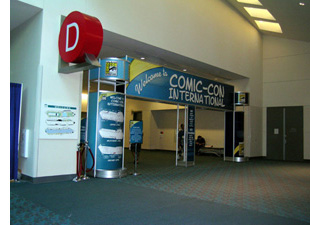 was speedy, with the barcode read and a badge generated and slipped into its plastic case in the blink of an eye. There were no events scheduled that night. It was simply an opportunity to get a look at the exhibition hall, with its thousands of booths and, in the case of the big companies, display areas. Familiar logos were everywhere, and the place stretched out further than one can see.
was speedy, with the barcode read and a badge generated and slipped into its plastic case in the blink of an eye. There were no events scheduled that night. It was simply an opportunity to get a look at the exhibition hall, with its thousands of booths and, in the case of the big companies, display areas. Familiar logos were everywhere, and the place stretched out further than one can see.
I mostly spent the evening checking out the companies related to The Lord of the Rings: Weta Workshop, Sideshow Collectibles, and the tiny booth shared by TheOneRing.net andSlave Boy Films (which produces fan-related video, mainly for websites). I was to do three one-hour signings there in the course of the Con, and it became my pied à terre for the duration of the event. (Thanks to producer Justin Sewell and his team for their hospitality!) I also visited the New Line display, but it was mainly there to sell DVDs of Harold and Kumar Escape from Guantanamo Bay. Sure, people could order it online, but the official release date wasn’t until July 29—two whole days after Comic-Con ended.
(I’ve written up an account of LOTR and The Hobbit at Comic-Con on my “Frodo Franchise” blog.)
Many types of activities go on simultaneously. There are continuous movie and television previews with stars, directors, and/or writers present. There are autographs to be had, with the most famous people signing in the Sails Pavilion (above) and others at booths in the exhibition hall. (I spotted Marcia Wallace, aka Mrs. Crabapple in The Simpsons, signing at one table.) There are things to be bought, though numerous small promotional items are given away. There are panels and artists’ lectures to attend. There are open spaces in which costumed fans can perform or pose for pictures. Aspiring comics artists can show their profiles to representatives from big publishers like Dark Horse. Gamers can try out previews of forthcoming games. Lots of socializing goes on. After the Harry Potter fandom panel ended, I saw the owners of The Leaky Cauldron meeting ardent fans whom they had only known online up to that point. In short, one cannot possibly do and see more than a small fraction of what happens.
Apart from my signing sessions, I concentrated on panels. I was afraid from the long line that I would get shut out of the “Masters of the Web” panel on Thursday morning, but I got in easily—and indeed, throughout the event I didn’t get shut out of anything, though I didn’t try often to get into the big Hollywood previews. The panels, by the way, start at the civilized hour of 10 am. Those of us taking the shuttle buses from distant hotels could still get up at a reasonable time, get breakfast, and make it to them.
Our TORN panel took place on Friday morning. Not everyone who wanted to attend could get into the 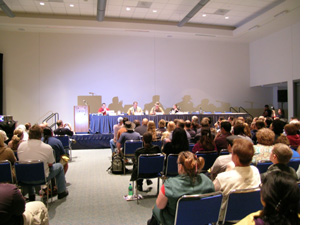 room. Apparently one fan who was shut out got unruly and had to be subdued by security staff! Those who did get in were an enthusiastic bunch, and we spent the session speculating on casting and on possible approaches to adapting The Hobbit and especially to writing the mysterious “Film 2” that is to create a “bridge” covering the sixty-year gap between The Hobbit and The Lord of the Rings. Judging from the applause, Martin Freeman (familiar in this country mainly as Declan in Shaun of the Dead) would be a popular choice for Bilbo. He does look like he would make a plausible hobbit. My suggestion of Mark Ruffalo for Thorin should definitely be taken seriously by the filmmakers.
room. Apparently one fan who was shut out got unruly and had to be subdued by security staff! Those who did get in were an enthusiastic bunch, and we spent the session speculating on casting and on possible approaches to adapting The Hobbit and especially to writing the mysterious “Film 2” that is to create a “bridge” covering the sixty-year gap between The Hobbit and The Lord of the Rings. Judging from the applause, Martin Freeman (familiar in this country mainly as Declan in Shaun of the Dead) would be a popular choice for Bilbo. He does look like he would make a plausible hobbit. My suggestion of Mark Ruffalo for Thorin should definitely be taken seriously by the filmmakers.
Other panels I attended involved the Disney “story process,” Sideshow and Marvel toys, and HP fandom. I heard Tolkien artist John Howe’s and comics master Lynda Barry’s talks, definitely two of the highlights of the Con for me. I had long loved John’s Tolkien illustrations and had corresponded with him during the writing of The Frodo Franchise, and it was a huge treat to get to meet him in person—and find that he had read and admired my book. Immediately we were talking like old friends.
Arriving early for Lynda’s talk, I sat through the end of a presentation on an animated series that I had never heard of. During this, Lynda came in and happened to sit down right next to me! (No one who has seen her self-portraits in her comics could fail to recognize her.) I hesitated to ask for her autograph, since some people don’t like to be bothered when they’re about to go onstage. When someone else asked and she didn’t seem to mind, I took my chance. I introduced myself as a fellow Wisconsinite, and she was most charming about signing my program. A good thing, too, since I didn’t figure out her schedule of autograph sessions at the Drawn and Quarterly table until after they were over.
The only disappointing panel was “The Culture of Popular Things: Ethnographic Examination of Comic-Con.” The panelists were a bunch of undergrads (and one grad students) doing a class project which consisted of interviewing exhibitors and fans on various subjects! I’m sure the students are smart and enthusiastic, but they didn’t belong on a panel. If Comic-Con organizers want to add an academic thread—and given the miniscule attendance at these events, I don’t see why they would—they should find some pop-culture experts to make up the panels.
[August 2: I have heard from Dr. Peter Coogan concerning my remarks on the panel “The Culture of Popular Things: Ethnographic Examination of Comic-Con 2008.” He offers some information about the Comic Arts Conference.
The CAC, which has been associated with the Comic-Con since 1992 and a formal part of the Comic-Con since 1998. We run four panels per day for over 20 hours of programming and are one of the largest programming tracks at Comic-Con. Last year the CAC was a small part of the successful argument that the Comic-Con made against San Diego’s attempt to get it reclassified as a for-profit corporation in terms of the rate it would be charged for city services.
Regarding attendance, the CAC was originally located down in room 17 (about 80 seats), but moved up to 7A (about 150 seats) after a few years, and last year to 30AB (about 200 seats). We have consistently filled or overfilled our space, and so have been rewarded with ever larger venues. Attendance was down at CAC panels this year, as it was at many non-media panels across the con. Because of the increased attendance at the con, the lines for the larger Hollywood panels have increased, and attendees, paradoxically, are less free to attend other panels because of all the time they spend waiting in lines.
No doubt I generalized too much on the basis of one panel, for which I apologize. More information on the CAC can be found at its Website.]
The exhibition hall, previews, and panels officially end at 7 pm. Films are screened at night, but I didn’t go to any of them. The main evening events are parties put on by big studios and manufacturers at hotels and screenings held by the studios in local movie theaters. I had a sample of each.
As a member of the TORN panel, I got invited to the Gentle Giant/ Lucasfilm/ Weta/ Sideshow party on Friday evening. I expected that there would be some sort of promotion for upcoming films and products, but there wasn’t anything at the party itself. An adjacent room held a large stack of swag-bags, but I didn’t think I would want to haul home most of what was in them, so I never found out what they contained. I had another chance to talk with John Howe, then briefly with Richard Taylor, and then went off to get a solid eight hours in preparation for the next day.
One of the films being shown in its entirety was Hamlet 2. Our good friend James Shamus of Focus Features got me onto the VIP/Press list, so on Saturday night I was off to the Gaslamp 15 multiplex. The film, which was a hit at Sundance this year, is an amusing and cheerily offensive film which has the potential to be one of this year’s indie sleepers. Director-writer Andrew Fleming, co-writer Pam Brady, and star Steve Coogan were there for a Q&A after the screening. It was definitely a more relaxed and personal session than the one I witnessed for a big studio films, where the guests were tiny dots in the distance and had to be viewed on giant TV screens.
That one preview and Q&A that I witnessed was for Terminator Salvation, which I had sort of assumed that I would miss. I had been avoiding the giant Hall H, where the big studios held their promotional events, because I had heard horror stories about hours waiting in line for one of the 6500 seats. There was plenty to do elsewhere. But I definitely wanted to see the 2:30 Pixar presentation of scenes from upcoming features Bolt and Up. That was at I decided to go early and get in the Pixar line just after Terminator Salvation started at 1:15.
It turned out that there was in fact just one line for Hall H, moving continuously as seats became available. This makes it difficult to gauge when to queue up for a specific event. That line snaked from the entrance across the plaza and made several long loops across the grass. Some people had settled in for lunch. But at about 1:20 we began to move surprisingly quickly. Turned out that the Terminator Salvation show was running a bit late, and I made it just as the preview reel started. It looked like it might be good, though my ears hurt for two days afterward (especially since they showed it again at the end). Director McG and some of the actors held a Q&A afterward—mostly the usual stuff about how wonderful it was to be working with each other. The high point came when a young Asian-American man from the audience asked a question in a perfect “Arnold” voice. He was called up to the stage to help field questions, keeping up the Arnold imitation flawlessly. By the way, Christian Bale (starring as John Connor) wasn’t there, though maybe if he had showed up, he could have avoided a spot of trouble he got into in London a few days earlier.
The Pixar session was a double preview. Co-directors Byron Howard and Chris Williams introduced some lengthy clips from Bolt, to be released November 26. It’s about a dog who plays a super-dog on TV and thinks he really has super powers. The footage cut together storyboard images, unrendered animation, and finished shots, which the audience didn’t seem to mind in the slightest. We’re used to seeing DVD supplements on pre-viz or storyboarding, but to see them all mixed together and edited into sequence, the way the filmmakers themselves see them during post-production, is a rare treat.
Then it was co-director Peter Docter’s turn to introduce Up. This sounds like one of the odder Pixar premises: a 78-year-old man avoids life in a nursing home by tying a giant bunch of helium balloons to his house and flies it to South America, discovering a stowaway boy and ending up in the jungle. The footage shown looked charming. Up is due out May 29. What with WALL-E this summer and these two coming soon, it looks like Pixar is managing to pick up the pace of production to more than one feature per year.
Hall H is essentially impossible to photograph. It’s too dark to shoot without flash, and flash only lights up a small area. To give a sense of scale, though, that orange rectangle near the center of the photo is the stage where the celebrities sit for their sessions. Sitting near the back, I could see them only as small dots, except on the monitors.
On Sunday I wandered around the exhibition hall, which I hadn’t really explored up to then. It’s divided into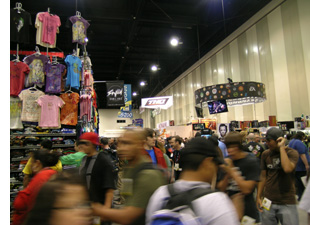 general sections by type of display. There’s an aisle for upcoming video games; that round thing in the photo at the right is the Electronic Arts sign. Gamers crowded it to try out the new titles. Artists’ Alley is where independent artists and aspiring artists can rent small display tables. Despite the proliferation of media publicized and sold at Comic-Con, comics still command a substantial portion of the floor. Dealers may offer old comics, original artwork, animation cels, and posters. Henry was delighted to find and purchase an original newspaper page with a well-preserved Winsor McCay comic-strip on it.
general sections by type of display. There’s an aisle for upcoming video games; that round thing in the photo at the right is the Electronic Arts sign. Gamers crowded it to try out the new titles. Artists’ Alley is where independent artists and aspiring artists can rent small display tables. Despite the proliferation of media publicized and sold at Comic-Con, comics still command a substantial portion of the floor. Dealers may offer old comics, original artwork, animation cels, and posters. Henry was delighted to find and purchase an original newspaper page with a well-preserved Winsor McCay comic-strip on it.
The big studios have large display areas for films and TV shows. Aisles around them seemed always to be choked with people, I gather getting autographs from cast members. I never did get close enough for a good look, but obviously these booths are very popular.
Action and collectible figures are represented, there’s an area for comic and graphic-novel publishers, such as Drawn and Quarterly.
Overall I enjoyed Comic-Con. I don’t think it will be one of those events I long to attend every year, but I would like to go back. Presumably in a year or two publicity for The Hobbit will start showing up at the Con, and that I definitely would like to see.
Summer show and tell
DB here:
I came back from a month in Europe to find a stack of magazines, books, and DVDs waiting. There was Before the Rain, much Cecil B. DeMille, and a mass of Anthony Manns (some discussed on Jonathan Rosenbaum’s blog). How will I ever catch up? I was reconciled to the idea that I’d die before reading every book I owned, but now I have to face the same conclusion about movies on discs.
Herewith some items from my trip to Amsterdam, Bologna, and Brussels that I couldn’t squeeze into earlier blogs. I end with the movie I watched upon my return.
DaViD’s DVD depredations
In Bologna, I learned that Oksana Bulgakowa is at work studying how cinema captured everyday human gestures at earlier points in history. Visit her site, where a DVD is available on her research.
Speaking of DVDs, travel inevitably brings them into your baggage, despite the high prices and the abysmal exchange rate.
*At Bologna our Copenhagen pals gave us the new Danish Film Institute DVD, Danish Experimental Classics 1942-1958. Not quite yet available for sale, it should show up here—as has a third collection of Jørgen Leth movies. While you’re sniffing around the site, eyeball the archive’s new state-of-the-art storage facility.
*Hubert Niogret, indefatigable director of documentaries on Asian cinema, has also produced an excellent collection of interviews, Mémoires du cinéma francais: De la libération à nos jours. Together we sampled an outstanding Bologna specialty, gramigna con salsiccia.
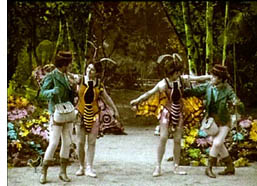 *Isabel Biver passed along the latest installment of Imagination in Context, a series of books and discs about early cinema and Antwerp. Animalomania includes English-language text and some nice films, including a hand-colored fantasy about butterfly collectors who wind up with pretty girls dressed as butterflies.
*Isabel Biver passed along the latest installment of Imagination in Context, a series of books and discs about early cinema and Antwerp. Animalomania includes English-language text and some nice films, including a hand-colored fantasy about butterfly collectors who wind up with pretty girls dressed as butterflies.
*At a sale table I found the Index DVD of Ivan Ladislav Galeta’s works, which includes the remarkable Two Times in One Space (1976/1984). I caught up, finally, with the Austrian Film Museum’s reconstruction of Frank Borzage’s The River.
*In Brussels I picked up the StudioCanal collection of Méliès films, which complements the recent Flicker Alley collection. Of course then I had to splurge on Laurent Mannoni’s gorgeous book, L’oeuvre de Georges Méliès.
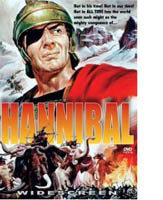 *Also snagged a batch of Gosha and Uchida swordplay movies, but in the Japanese line my real finds were a French edition of Night and Fog in Japan, one of Oshima’s finest (also just out in the UK) and the Carlotta set of three 1930s Mizoguchi films: The Downfall of Osen, Oyuki the Virgin, and Poppies. All drawn from 16mm copies, these items vary drastically in quality. Osen is superb, but Oyuki is iffy, and Poppies is a rain of scratches, the worst copy I’ve ever seen.
*Also snagged a batch of Gosha and Uchida swordplay movies, but in the Japanese line my real finds were a French edition of Night and Fog in Japan, one of Oshima’s finest (also just out in the UK) and the Carlotta set of three 1930s Mizoguchi films: The Downfall of Osen, Oyuki the Virgin, and Poppies. All drawn from 16mm copies, these items vary drastically in quality. Osen is superb, but Oyuki is iffy, and Poppies is a rain of scratches, the worst copy I’ve ever seen.
*To top things off, Tom Paulus of the University of Antwerp, bestowed upon me his extra copy of Edgar G. Ulmer’s Hannibal (1960) in SuperCineScope. This is what friends are for.
Interlude: Some Europix, arty and otherwise
My last sigh x 3
Every summer the Arenberg cinema holds a retrospective season, Ecran total, and it helps make Brussels a great film city. This time there were cycles dedicated to Delphine Seyrig, Al Pacino, the Japanese New Wave, and children, as well as a batch of classics. Prints are usually fresh, and the programming is very eclectic. So Saturday, the day before I flew home, I saw three movies at the Arenberg. I liked the West Anderson better than I expected to, though the clash between the overall feyness and a child’s death left me a little stranded emotionally. I had forgotten the Lumet since the initial release; not up to Prince of the City methinks, but a sturdy, earnest piece of work. The Duras proved as mesmeric as ever, and still unthinkable on DVD (even though I have two DVDs of it). All in excellent prints and pinpoint-sharp projection. Cinephilia satisfied: No need to watch anything on the plane home the next day.
No need to eat much either, because of a delicious late meal with our old friend Geneviève van Cauwenberge, head of the film and media program at the University of Liège.
Trafficking
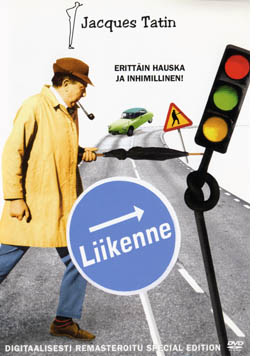 For my avant-birthday, Kristin (a) bought me a beautiful Krazy Kat page; (b) took me out for sushi; and (c) settled in with me to watch the new Criterion disc of Jacques Tati’s Trafic. It’s been one of our favorites for a long time; I saw it on initial release in Paris while researching my dissertation. It’s not as densely loaded as Play Time, nor as structurally rigorous as M. Hulot’s Holiday. (Kristin wrote about both these films in her book Breaking the Glass Armor; my bias aside, her analyses are really illuminating.) Trafic has its own charms, though, and Gary Giddins gets at several of them here. We’ve collected versions on tape and even a Finnish DVD, which calls him Tatin, but the Criterion looks to be the best version yet. (Still, why not anamorphic?)
For my avant-birthday, Kristin (a) bought me a beautiful Krazy Kat page; (b) took me out for sushi; and (c) settled in with me to watch the new Criterion disc of Jacques Tati’s Trafic. It’s been one of our favorites for a long time; I saw it on initial release in Paris while researching my dissertation. It’s not as densely loaded as Play Time, nor as structurally rigorous as M. Hulot’s Holiday. (Kristin wrote about both these films in her book Breaking the Glass Armor; my bias aside, her analyses are really illuminating.) Trafic has its own charms, though, and Gary Giddins gets at several of them here. We’ve collected versions on tape and even a Finnish DVD, which calls him Tatin, but the Criterion looks to be the best version yet. (Still, why not anamorphic?)
Trafic is definitely odd, with a choppy opening and quickly-cut extreme long shots. This time around I was struck by how much a landscape artist Tati was. Sometimes he built his own massive milieu, as in Play Time, and sometimes he merged his constructed spaces with the real world, as in the houses of Mon Oncle. In Hulot and Trafic he exploited the vastness of real spaces, usually the backdrop for human foibles made minuscule. Trafic gives us a un-picturesque European countryside. Sliced by superhighways, the bland vistas are dotted with rusted cars, empty fields, and forlorn gas stations. Drivers hiking off for fuel or trying to patch up their vehicles dwindle to pathetic dots in the image. Cities are no better, choked with pale cars that advance fitfully. Then there’s the huge convention center housing the auto show. The opening gag of men stepping carefully over stretched strings that we can’t see etches tiny gestures into a monumental frame. Masters of ambivalent vastness: Antonioni, Angelopoulos, Tarr….and Tati?
The setpiece of Trafic is of course the car crash, and it, like Tati’s characteristic running gags (e.g., cheap busts of historical figures as bonuses for gas fillups), reminds us of the follies of the car culture. In a sense, the entirety of Trafic seems an outgrowth of Play Time‘s final sequence, which turns a traffic roundabout into a carousel. But here there’s little sense of a mundane world transformed into a playground. Instead, modern misery remains the norm, as pedestrians zigzag their way through infinite gridlock.
Beyond the satire, which can get fairly caustic, I have always loved Tati for juxtapositions so weird and remote that you wonder if they could count as gags. Then you wonder if you’re the only person to notice them. In Play Time, everybody gets the running gag about the drunk at the bar of the Royal Garden tipping over on his stool. Far less evident is a moment I always find disconcerting. When the air-conditioning at the restaurant is finally switched on, the air vents make the loose skin on one woman’s back ripple. The denunciation of flabby bourgeois comfort comes and goes in a flash, and when I first noticed it in the 1970s I thought: Is it accidental? Did Tati mean for me to see it? Does anybody else notice? And does this count as a gag, or just, well, peculiar?
Likewise, in Trafic, Tati can cut from a bisected car on display to a quasi-abstract angle on traffic, with one fender sliding past an identical one.
We’re supposed to notice the purely sculptural analogy of split cars. And we’re supposed to find it at least a little funny. Right? Right?
Whether you agree or not, Tati’s vacant long-shots and unpredictable cutting leave space for such musings. Comedy with a question mark, from one of the dozen or so greatest directors who ever lived.
Kristin is now at Comic-Con, armed with fan-friendly T-shirts and a carrier bag from Lambiek. Her mission: to sell a copy of The Frodo Franchise to each of 125,000 attenders. Expect dispatches from her in the days to come.
P. S. My thanks to the staff of the vaults at the Royal Film Archive of Belgium, who were extremely helpful during my visit. I didn’t manage to photograph everybody, but I owe special gratitude to the supervisor Marianne Winderickx, pictured below.
PPS 24 July: Olli Sulopuisto clears up my Tatin puzzlement: “In Finnish the trailing n is the mark of a possessive, similar to ‘Jacques Tati’s…'” Thanks to Olli.
A is for Amsterdam
DB from the road:
The first leg of our summer trip was a brief stopover in Amsterdam. It’s a city of canals and bicycles, some of them parked in patterns recalling a scrimmage. (See end of blog.) We visited the excellent comics shop Lambiek, strolled around, and tried to get over jet lag. Kristin did. Always does. I didn’t. Never do.
Our reason for coming was the series of events surrounding the official retirement of Thomas Elsaesser from the University of Amsterdam. Thomas is renowned for several accomplishments—his remarkable essays on Hollywood melodrama and 1970s cinema, the major books on New German Cinema and Fassbinder, his enormously wide-ranging comparative study of European and American cinema, his reflections on cinema’s ties to nineteenth-century media. He also established an excellent book series at the University Press.
Thomas is also an old friend, a big influence on our work ever since his days at Brighton Film Review and Monogram, and a generous host when we were visiting London in the 1970s and early 1980s to work on our book, The Classical Hollywood Cinema. He kindly published Kristin’s Lubitsch book in the Amsterdam series. I wrote a little tribute essay for his sixtieth birthday festschrift, available in English here.
In 1991 Thomas left the University of East Anglia to form a film department at the University of Amsterdam. Many members of the university looked askance at the study of cinema, but he grew his program spectacularly. A department with scarcely half a dozen faculty members expanded to sixty staff members and 1400 students. The range of study is now immense, from classical cinema and Dutch moviegoing in the silent era to theorizing about contemporary digital media.
During our visit there were three main events. On Thursday 26 June a large and warm symposium featured brief papers from 21 of his students, many of them known to English-language readers—Ginette Vincendeau, Peter Krämer, and Warren Buckland. The topics included cultural history of media (even advertising movies), gender and melodrama, the relation of European cinema to US cinema, and “mind-game films.” We had to miss the final sessions in order to check into our hotel, but what we heard was stimulating. One session was graced by an image that metamorphosed from Elsaesser to Hitchcock and back again. You can see it here.
The following day was the formal ceremony: Thomas’ farewell speech in the University Auditorium, a converted chapel. Thomas and other professors, garbed in robes and caps, filed in and Thomas took the floor to present his talk, “Of Feedback and Phasmids: A Farewell to Film Studies.” He offered both an oblique account of his institutional political battles and a broader account of trends in film theory across the last three decades. He wove clips from Master and Commander into his talk, which sometimes bolstered a comparison between his tough-minded handling of the program and Captain Jack’s nautical tactics.
Other colleagues paid glowing tribute, and there followed a reception, where Thomas received people’s formal congratulations. We also had a chance to catch up with old friends and make new acquaintances. We saw Noll Brinckmann and Peter Krämer.
Kristin caught up with Karel Dybbets, historian of Dutch cinema and a pioneer in the study of local movie theatres.
And though we met John Ellis and Roz Coward back in the 1970s, we hadn’t seen them since. They were great company.
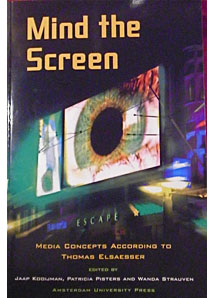 The final event was held that evening, in a reception room looking onto the Amsterdam Zoo. The department holds an end-of-year party, and this one had special meaning as Thomas’ last official one. He’ll continue to supervise dissertations, and he intends to keep living in Amsterdam—when he’s not doing guest teaching in other places (at the moment, Yale).
The final event was held that evening, in a reception room looking onto the Amsterdam Zoo. The department holds an end-of-year party, and this one had special meaning as Thomas’ last official one. He’ll continue to supervise dissertations, and he intends to keep living in Amsterdam—when he’s not doing guest teaching in other places (at the moment, Yale).
It was a terrific two days for us, not least for witnessing the great admiration and devotion that his colleagues and students displayed. They even edited, in secret, a book in homage to him (left). Thomas has not only reshaped our sense of how film works, but his dedication to media education has created a generation of lively and original young scholars.
Next up: B is for Bologna, a report from Il Cinema Ritrovato.












